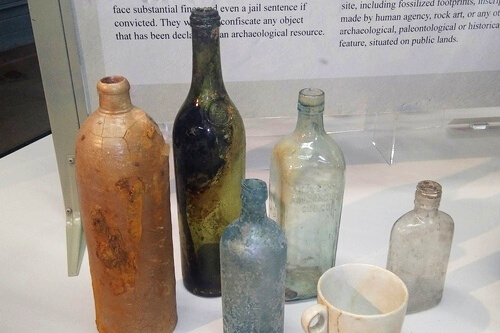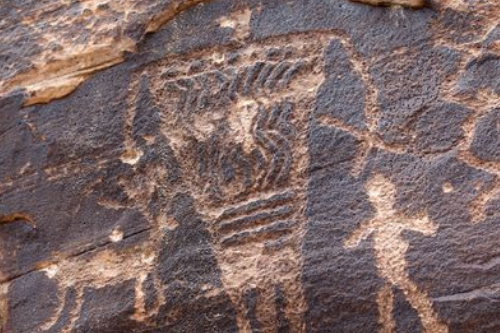
The Wonderful World of Plants and Archaeology
The Wonderful World of… is a monthly blog focusing on some of the many themes, concepts, and sub-disciplines related to the fascinating world of Southern Californian archaeology.
What is Paleoethnobotany?
Paleoethnobotany, or archaeobotany, is a subdicipline of environmental archaeology where botanical remains from archaeological sites are studied to identify human impact on past environments. Archaeobotanists identify, analyze, and interpret plant remains that are uncovered from archaeological sites. By studying plant remains, archaeobotanists are able to explain how human behavior and plants are related. How were plants used in the past by humans? For things like food, medicine, and more!
What Do Archaeobotanists Study?
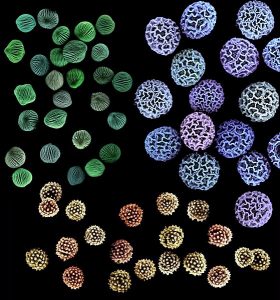
Photo: Asja Radja
Archaeobotanists many times are left to work with macroremains, or materials such as seeds, grains, and nuts. Charcoal and wood are also studied. There are a few ways in which these remains are preserved; they may be charred, frozen, waterlogged, or desiccated. Microremains, which are much smaller and require microscopic study, are also recovered – think pollen or spores, which are typically found in soil at archaeological sites.
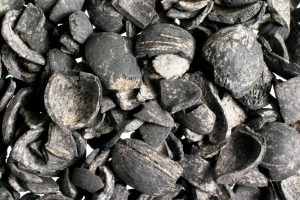
Photo: Wessex Archaeology
Archaeobotanists use the term charred when referring to plant remains that are reduced to elemental carbon when they are heated by the atmosphere. Charred remains are usually less fragile, as at some point they have come into contact with fire or extreme heat. How are charred remains recovered by archaeobotanists? Flotation is a common technique used in archaeology to separate plant (and other small) remains from soil. Using sieves, soil is added to water and the less heavy organic materials like seeds float to the top. These materials are called light fraction and are dried and then studied, many times under different types of microscopes for a closer look.
Here in San Diego, the Paleoethnobotany Laboratory at UCSD is doing incredible work and giving student researchers the opportunity to answer important questions.
Native Plants in San Diego
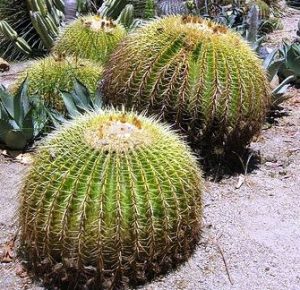
Native plants play an important role in their surrounding habitats. As native plants are threatened, so are the species that depend on them for survival. This is a San Diego Barrel Cactus. These are rare species and native to southern California and northern Baja California. These cactus have been important to both humans and animals in the region and like many others, are endemic to San Diego’s Coastal Sage Scrub.
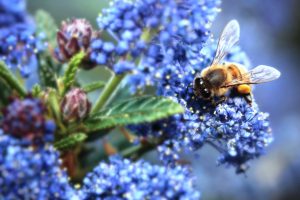
This is a California Lilac, or ceonothus! The name of this plant comes from the Greek word meaning “spiny plant”. You can find these blooming right now all over San Diego in the chaparral vegetation, which contains shrubs, bushes, and small trees. San Diego County chaparral is characteristic for this type of Mediterranean climate.
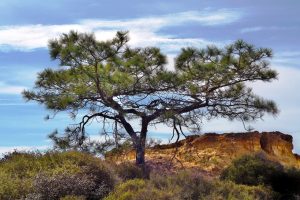
Photo: Randal Droher
Did you know the Torrey Pine is the rarest pine in North America? These rare pine trees occur naturally in San Diego in La Jolla and also on Santa Rosa Island, one of the Channel Islands. Plant conservators are working to gather tissues and seeds, studying the potential of these trees’ ability to fight invasive beetle species. Archaeobotanists and plant conservators compile seeds to create seed banks. Seed banks help with conservation and reintroduction efforts to make sure this unique tree species continues to thrive in its natural environment. They also play a role in research, as botanical comparative collections of seeds help archaeobotanists decipher their findings from archaeological sites.
April 24th marks the end of Native Plant Week. Join the 360 Virtual Native Garden Tour from the CNPS- San Diego Native Garden Committee! The tour is available beginning Saturday, April 24th at 10:00 am PST. The California Native Plant Society is a nonprofit organization seeking to increase understanding and appreciation of California’s native plants and to preserve them in their natural habitat through scientific activities, education, conservation, and restoration. Get involved with the San Diego Chapter!
Invasive Plants in San Diego

Invasive plants are harmful to the native plants that San Diego’s unique habitats depend upon. While many times it is hard to stop their spread, invasive species can be eradicated. An example of an invasive plant in San Diego is the Ward’s Weed. Ward’s weed is an invasive species from the Mediterranean and Western Asia. This weed was found in Carlsbad around 2008 and has been spreading in the region since then. They choke off other plants around them, harming many native plant communities in the area.
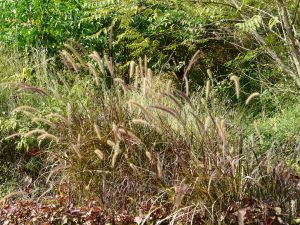
This African Fountain Grass is popular for landscaping but has become a problematic weed in California. Native to North Africa, this grass is invasive in California and San Diego. The damage it can do to other species is still unknown, but in a wildfire region like San Diego, these grasses can be very dangerous when their populations grow out of control.
San Diego as a Biodiversity Hotspot
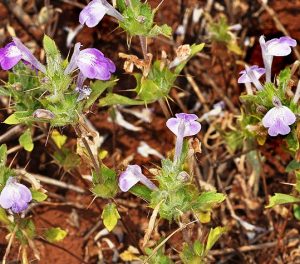
Photo: W.P. Armstrong
The Coastal Sage Scrub that helps to make San Diego a biodiversity hotspot must be protected so that the plants, animals, and humans that depend on this ecosystem are able to thrive.
This is San Diego Thornmint and it is a threatened species of plant endemic to Coastal Sage Scrub. It is one of the more rare species of native wildflowers in California! These and many other species of plants and animals depend on the Coastal Sage Scrub that contributes to San Diego being a biodiversity hotspot. As the Coastal Sage Scrub disappears, so will these important species and conservators, scientists, and archaeobotanists around the county are investing resources in their conservation and research to ensure their ability to survive.
by Jessica McPheters, Collections Manager


